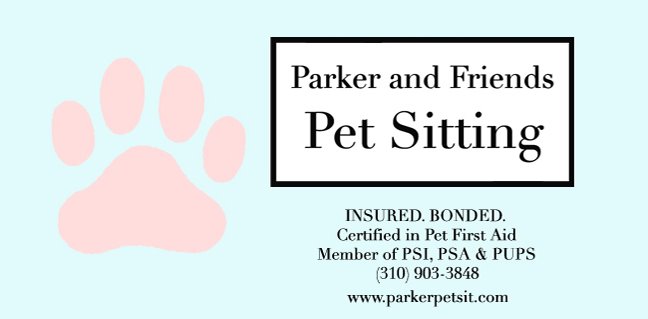Hey Everybody! I found this article to be very encouraging and helpful. It's from the Cesar Millan
website. I haven't tried his brand of dog food yet but I just might have to. Buy One Get One FREE. You can't beat that! I'll give a full report.

Beginning Friday, May 8 and continuing through the month, PETCO will feature a “Buy One, Get One Free” offer on 5 lb and 17 lb bags of Dog Whisperer Weight Management Dog Food. Cesar Millan, Inc. has decided to take this opportunity to highlight the problem of canine obesity. An estimated 25 to 40% of dogs are overweight, yet many dog owners may not even be aware their dog has a weight problem. The ideal weight depends on the dog’s breed, and even within a single breed, there is variation.
So how can you tell? Place your hands on each side o your dog’s rib cage. You should be able to feel each individual rib easily. If you can see the ribs or they are protruding, he may be underweight. If you can’t feel his ribs at all, he’s probably overweight. Next, look at your dog from the side. Is his abdomen tucked up slightly? This is more prominent in some breeds than others, but he should have a waist line. Underweight dogs will have an extremely prominent tuck. Overweight dogs will have no waist, and their abdomens may drag.
Dogs who suffer from obesity develop health issues due to the added stress on their heart, lungs, liver, kidneys, and joints. Also, these physical issues, combined with a lack of exercise, often result in behavioral problems. Fortunately, there are many ways that you can help your dog to get back to his or her ideal weight!
Seven Tips
1.) Consult your veterinarian. This should be your first step. Your vet can best inform you of the ideal weight for your dog’s breed and height and develop a strategy for getting him back on track. He can also make you aware of any potential health concerns or things to watch out for as you start the new routine. Always consult your vet before changing your dog’s exercise schedule or starting any weight loss program.
2.) Exercise! Many dogs develop weight problems for the same reason they develop behavior problems: they are not receiving enough physical challenges. For your dog’s safety, it is important to incrementally increase the exercise routine. Start with short sessions, and gradually add more time and greater intensity. Overweight dogs are also at higher risk for overheating and breathing problems, so it’s important to keep a keen eye out. Your vet can tell you what your dog can safely handle.
3.) Change to a weight management food. Foods, such as the Dog Whisperer Weight Control Formula, can help your dog get back to a healthy weight, while still providing the energy and nutrients your dog requires. Remember, the earlier an ingredient appears on a label, the more there is in the food. Look for high-quality meat ingredients in those top spots. For example, the Dog Whisperer formula’s top ingredient is organic chicken, a lean, healthful protein source. The formula also includes natural nutritional supplements that help break down stored fat and is fortified with the vitamins, minerals and fatty acids. Plus, no artificial preservatives, colors, flavors or added sugar!
4.) Cut back on snacks. Dog treats can add a significant amount of calories to your dog’s diet, as can human foods. If you’d like to give your dog a special reward, find healthier alternatives.
5.) Stay strong! Many dogs have mastered the skill of begging or giving that sad look in front of the food bowl, but it is important to recognize that your dog is manipulating you. The more you reward that behavior, the more he will continue it. If you stop feeding, your dog will stop pleading! Find out how much food your dog should be fed, and stick to it – not matter how forlorn your dog seems. Remember, it’s in his best interest.
6.) Don’t blame sterilization. This is a myth. Dogs do not get fat simply by being spayed or neutered. Just like humans, dogs gain weight if they eat too much and exercise too little or if they are genetically programmed to be overweight. The weight gain that people may witness after sterilization is most likely caused by continuing to feed a high energy diet to a dog that is reducing its need for energy as it reaches adult size.
7.) Get the whole family involved. Just like working with a problem behavior, everyone in the household needs to do their part. If you have children, be sure to explain to them the importance of helping your dog with his new weight loss control. Your dog will live a longer, happier life because of it!


No comments:
Post a Comment